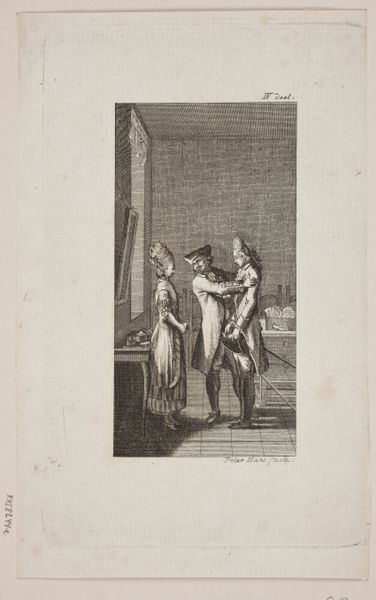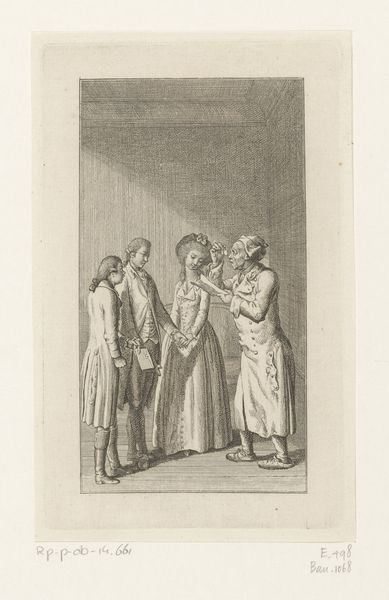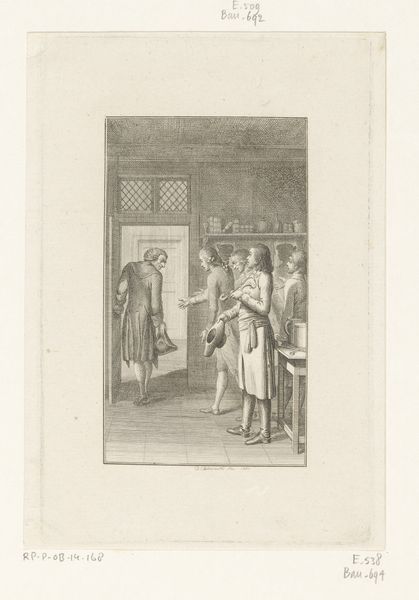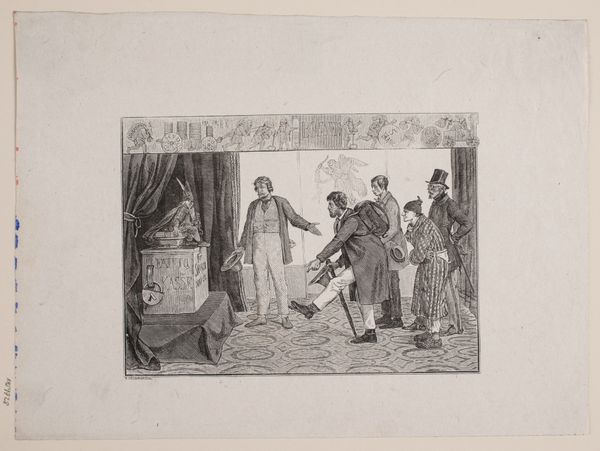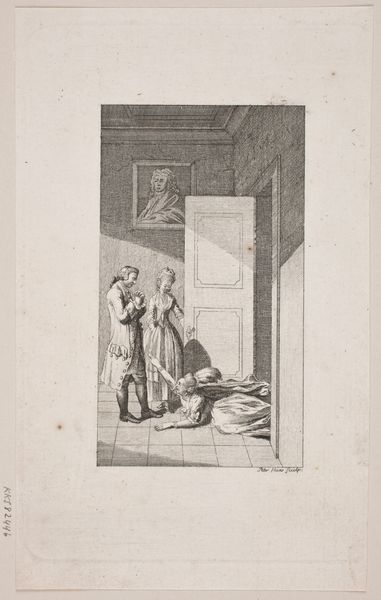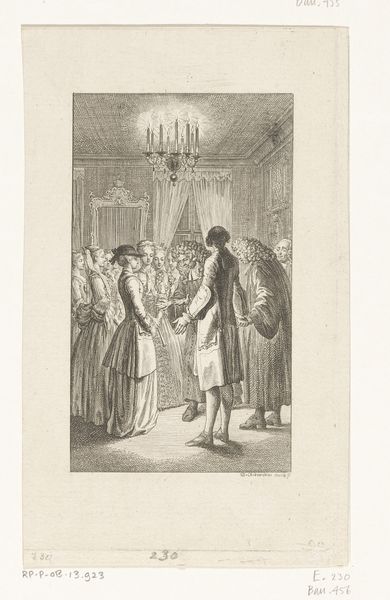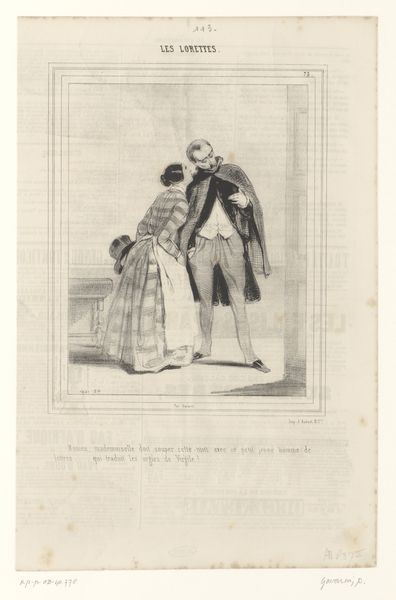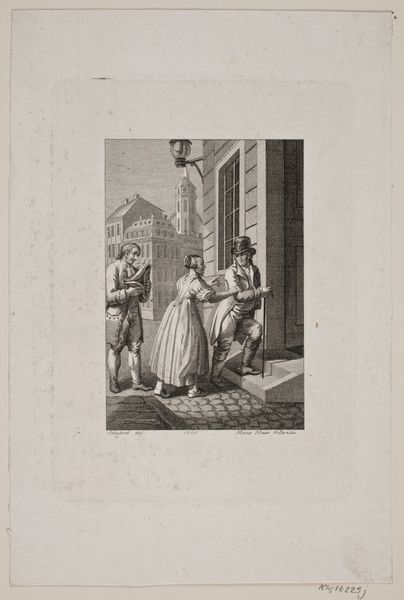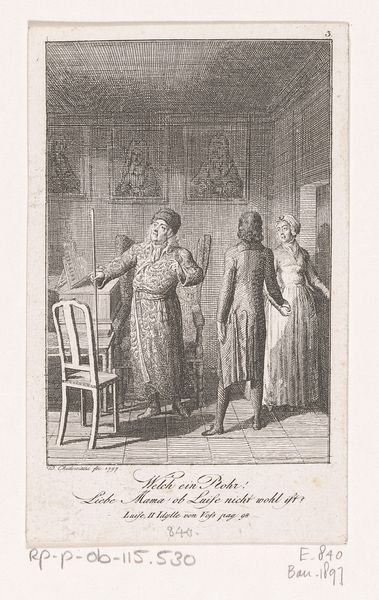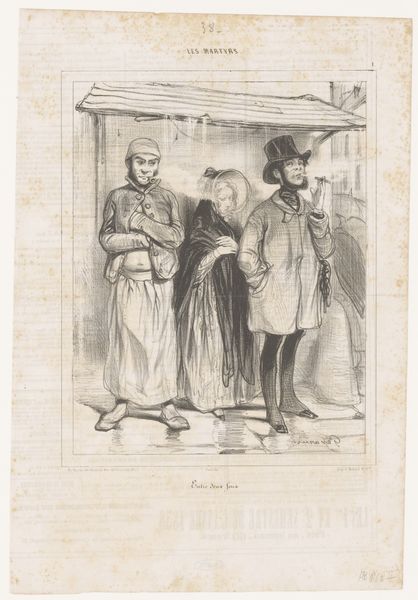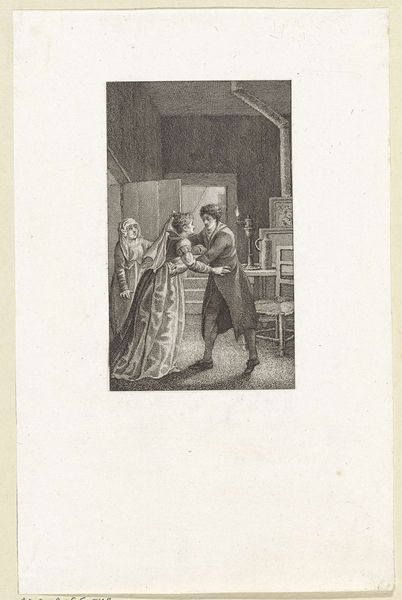
Henrich Stilling ziet Johan Wolfgang von Goethe binnenkomen 1778
0:00
0:00
Dimensions: height 119 mm, width 74 mm
Copyright: Rijks Museum: Open Domain
Curator: This engraving by Daniel Nikolaus Chodowiecki, made in 1778, captures a moment titled "Henrich Stilling ziet Johan Wolfgang von Goethe binnenkomen" which translates to "Henrich Stilling sees Johan Wolfgang von Goethe entering." It is currently held at the Rijksmuseum. What strikes you about it initially? Editor: The first thing that comes to mind is the awkwardness of the encounter! There’s a tension visualized between the figures, and it all revolves around the doorway acting as a visual barrier or threshold. Curator: Exactly. Chodowiecki’s work here, an engraving, falls into the realm of genre painting, depicting an everyday, intimate scene within a domestic space. We can see how he attempts to elevate genre scenes to more important events. Note the relief sculpture above the door, attempting to tie together domesticity with larger political concepts in artwork during the era. Editor: And what do you make of the specific symbolism in the scene? For instance, Stilling seems caught off guard, sword in hand almost like a prop rather than a weapon. There’s this element of unpreparedness. It clashes sharply with the assured pose of Goethe, framed perfectly in the doorway, and flanked by the attendant who peers around the doorway, the figures each having a distinct, immediate character. Curator: Absolutely. This piece reflects Enlightenment ideals circulating during that era; the idea of individual genius, here represented by Goethe, entering into the world and disrupting the existing social order and a commentary on the way enlightenment thinking interacts with ordinary folk. The way Chodowiecki frames Goethe suggests he brings something of the sublime or perhaps divine into the common setting. He has altered the scene to create a sense of both domestic familiarity while presenting the drama as historically and socially significant. Editor: So you are suggesting Goethe, represented by Chodowiecki, can be thought of as representing the Enlightenment disrupting the daily life in order to advance reason? Looking at the way the light catches the architectural lines, it emphasizes this feeling that something more than an everyday encounter is unfolding. Curator: Precisely. Chodowiecki, who moved among intellectual circles in Berlin, probably meant for viewers to recognize the impact individuals could have, and the politics of those intellectual relationships on German society in general. Editor: Seeing it that way really unlocks a deeper level to appreciate how powerful imagery functions during this time. Curator: Agreed, the work gives you pause to reconsider a brief moment, how the personal and the historical meet. Editor: And in turn how an image works to hold history. Thank you.
Comments
No comments
Be the first to comment and join the conversation on the ultimate creative platform.



